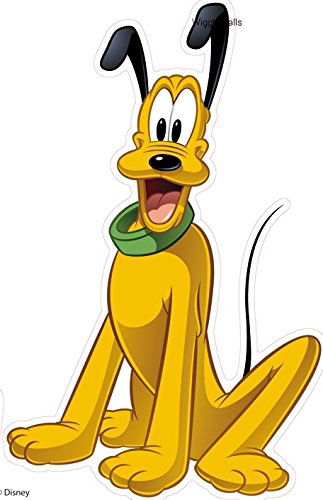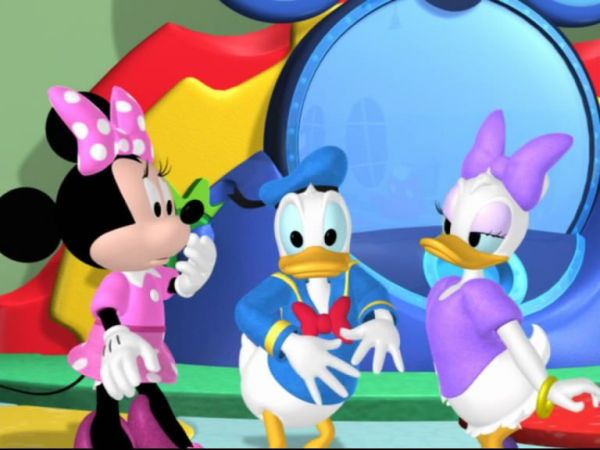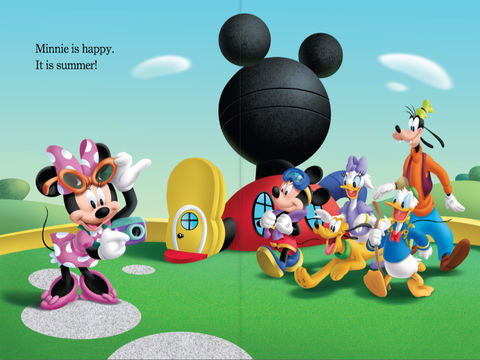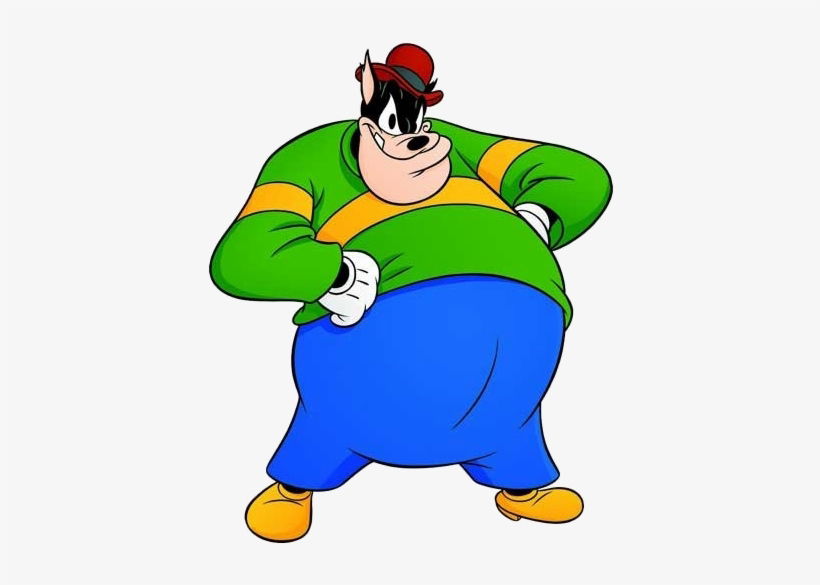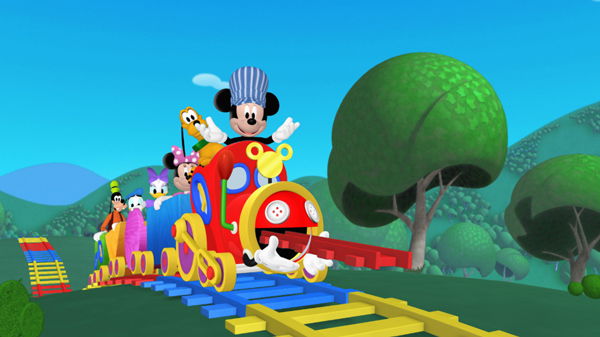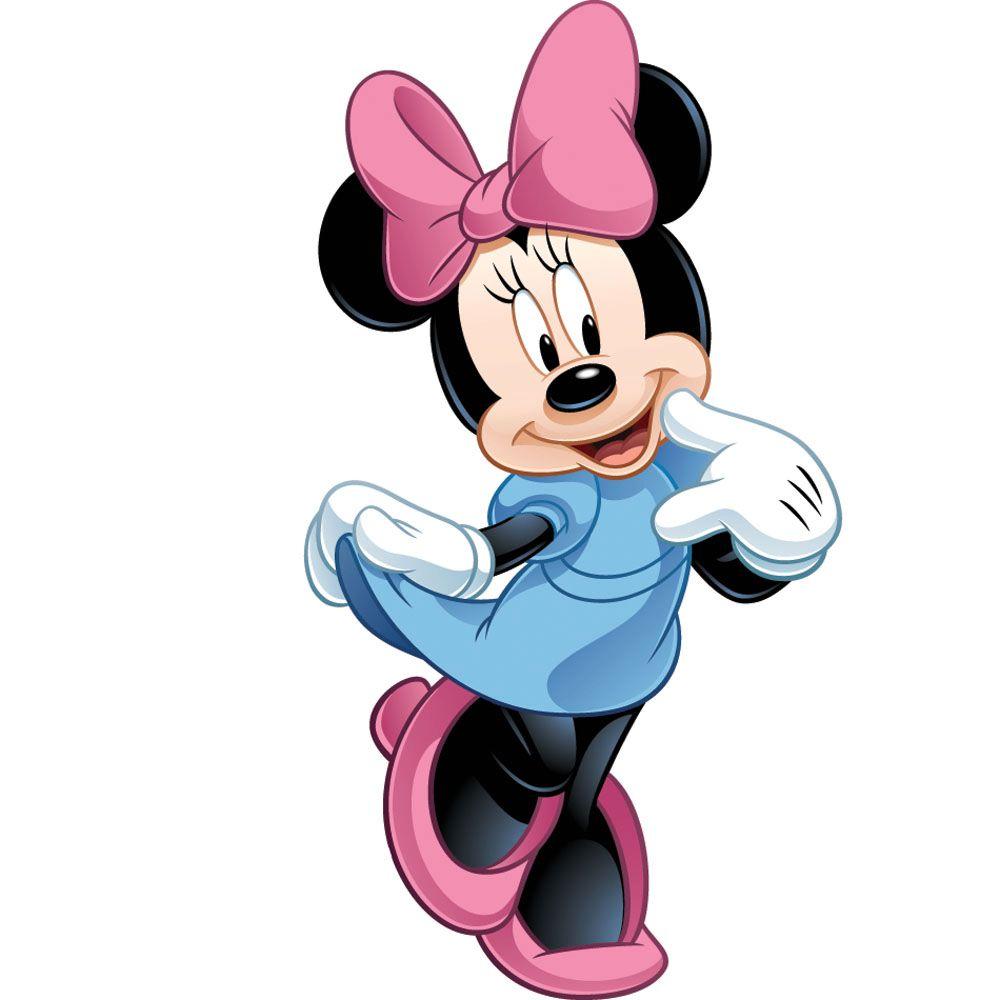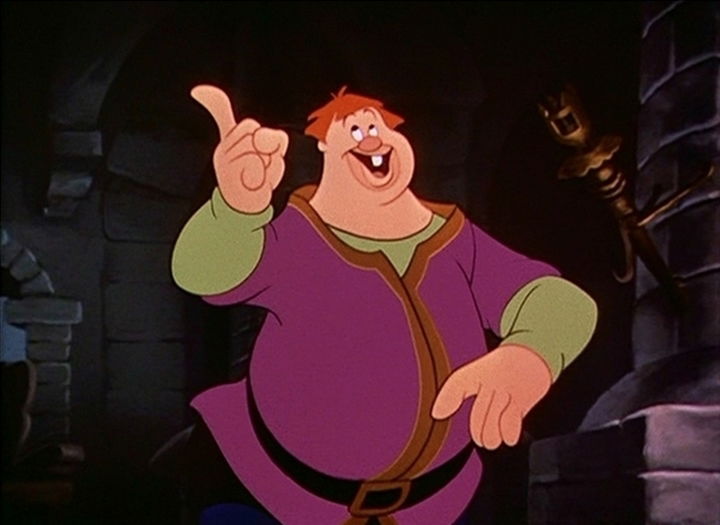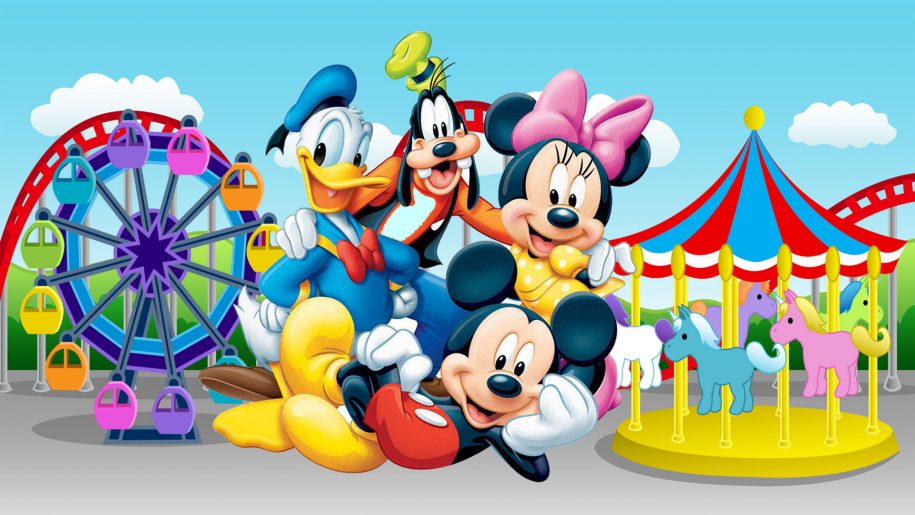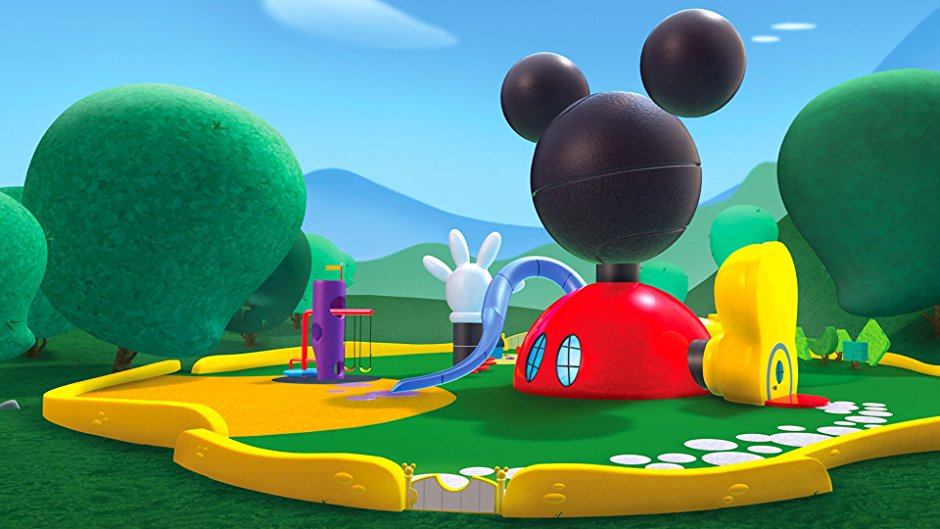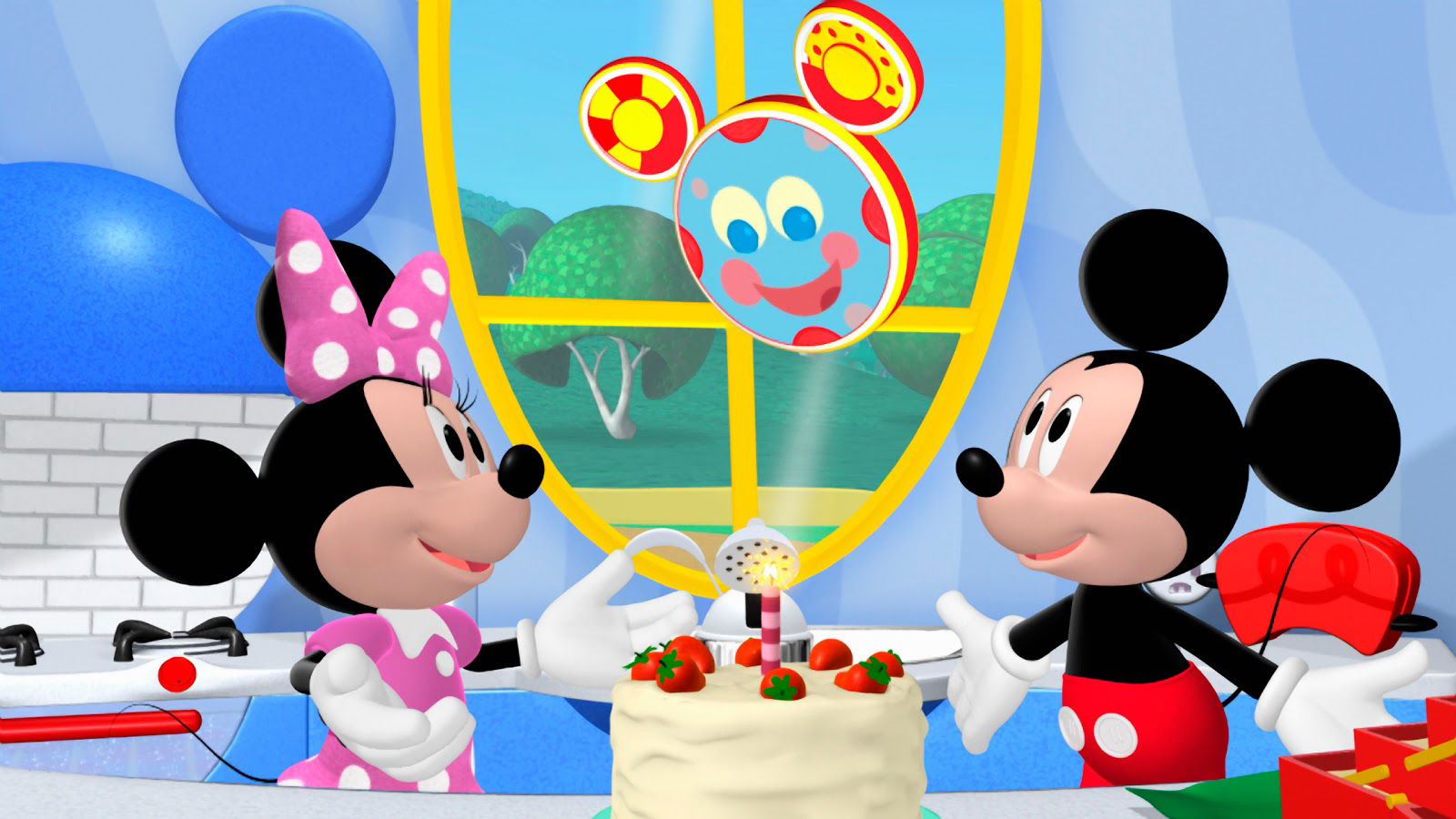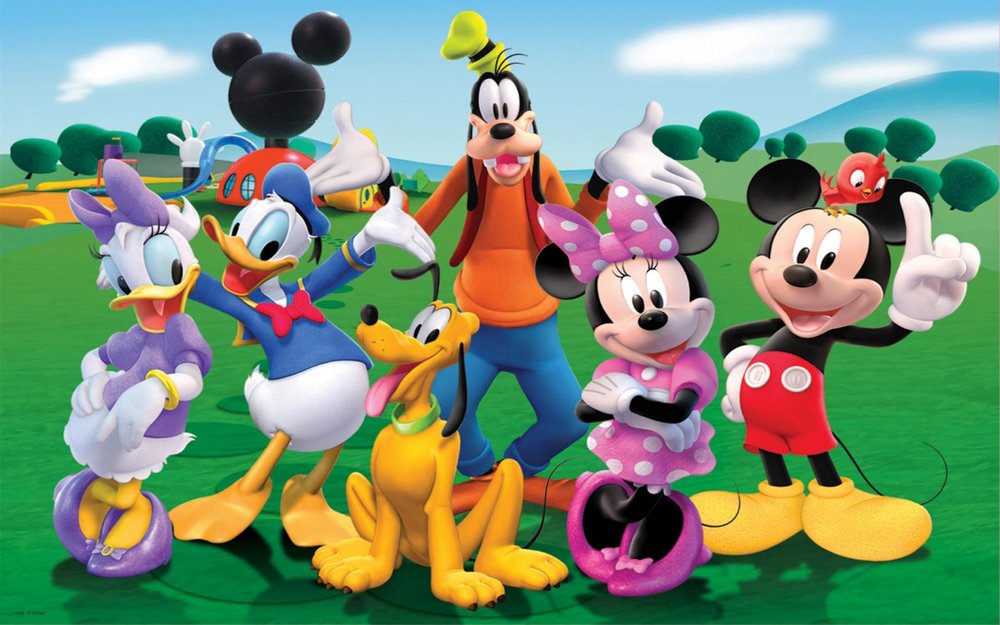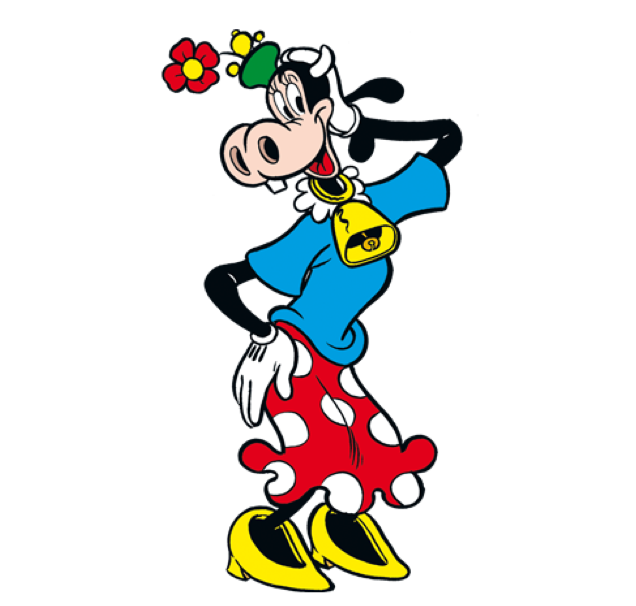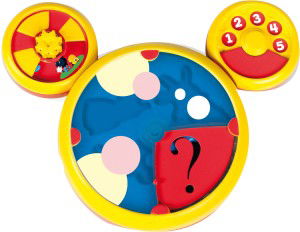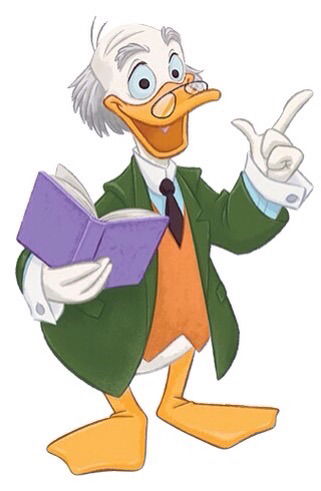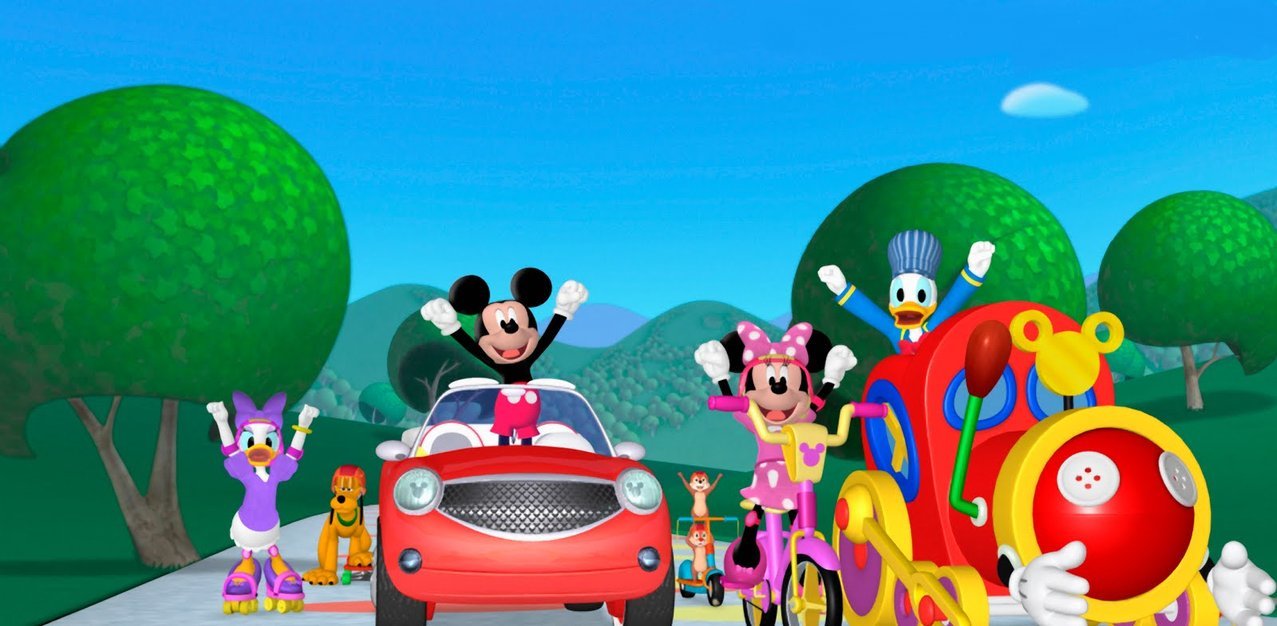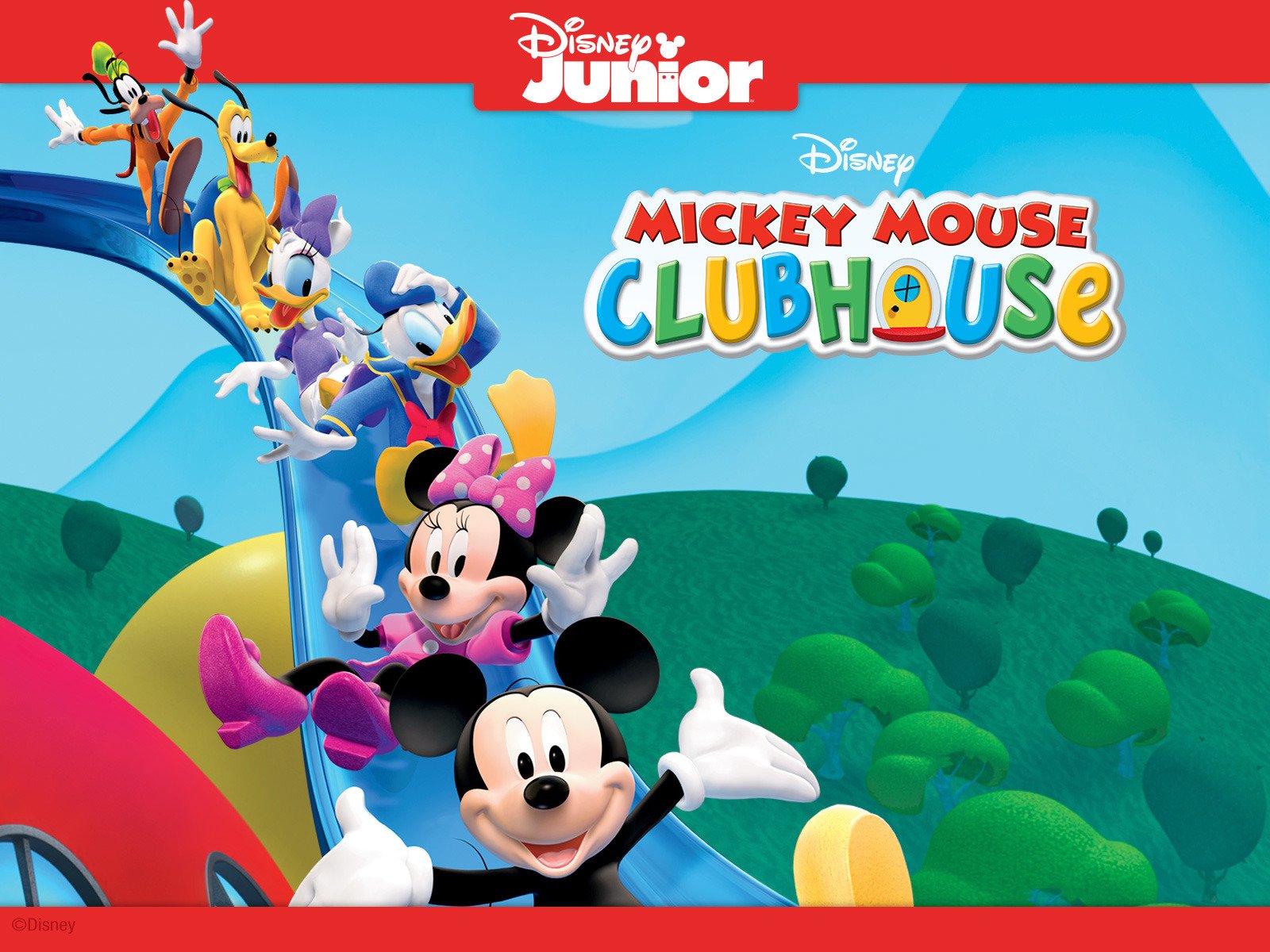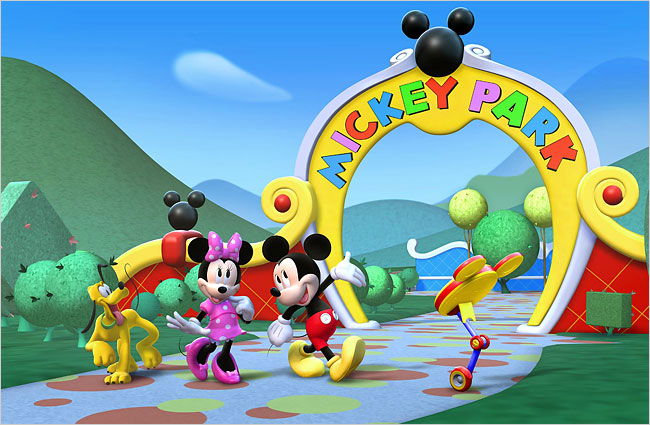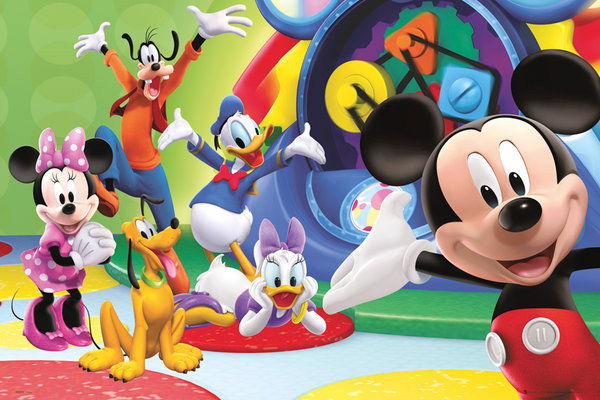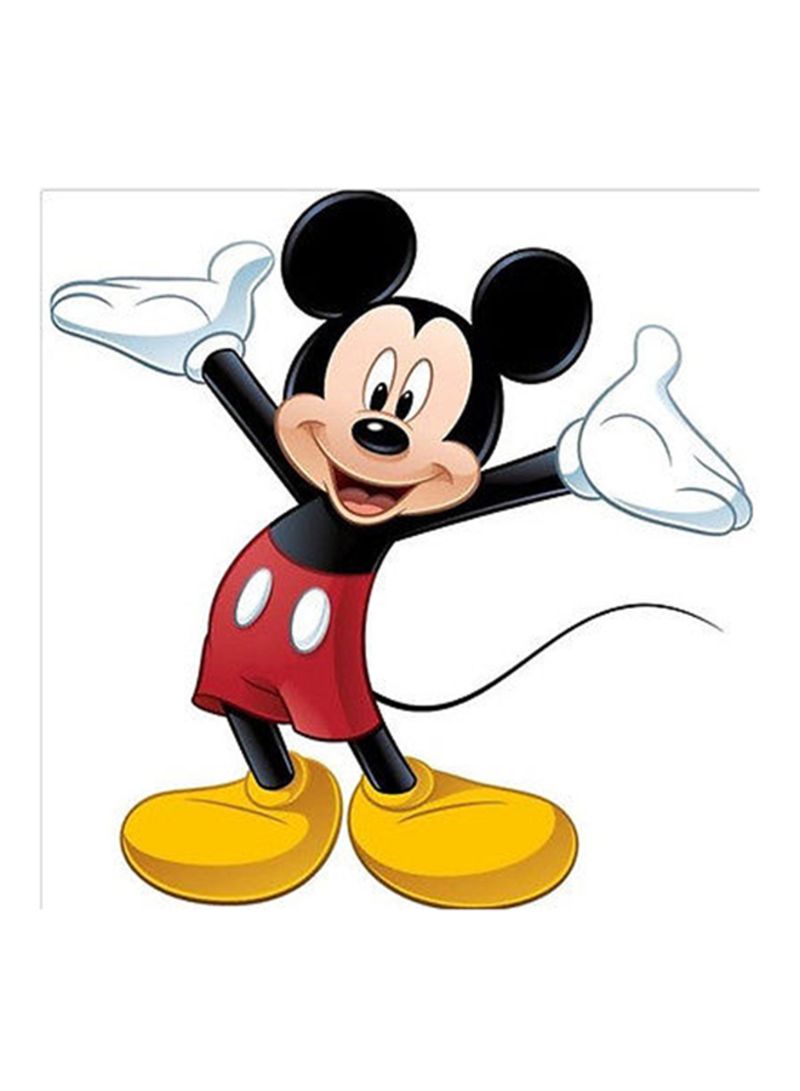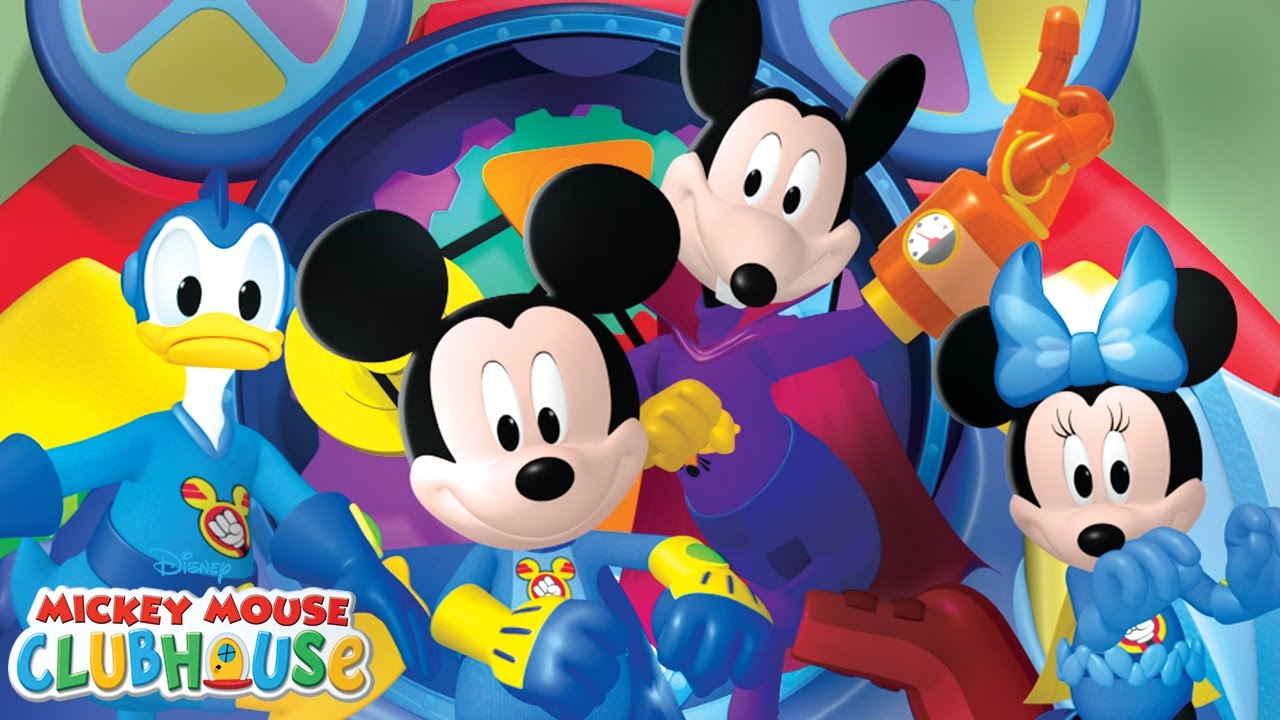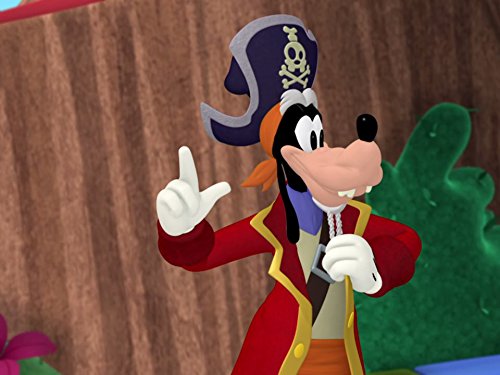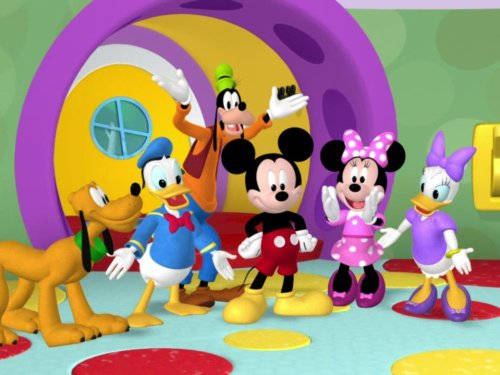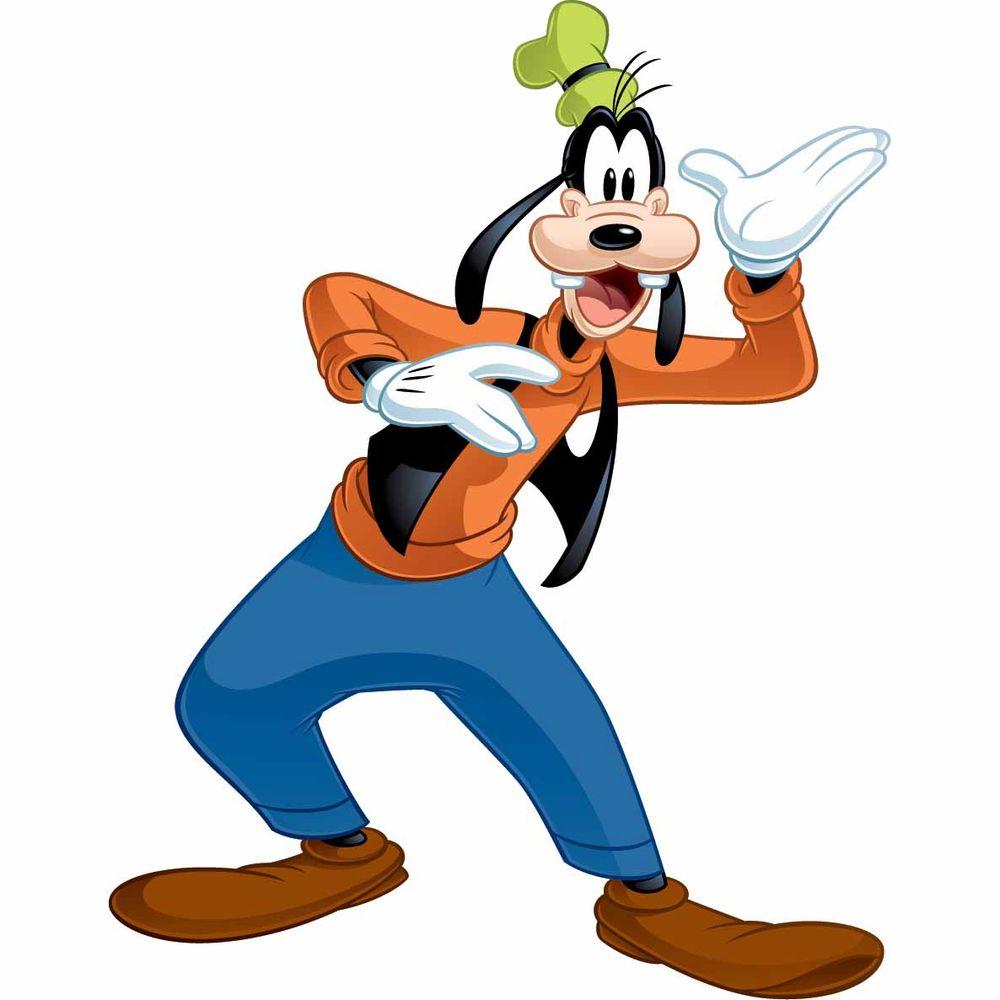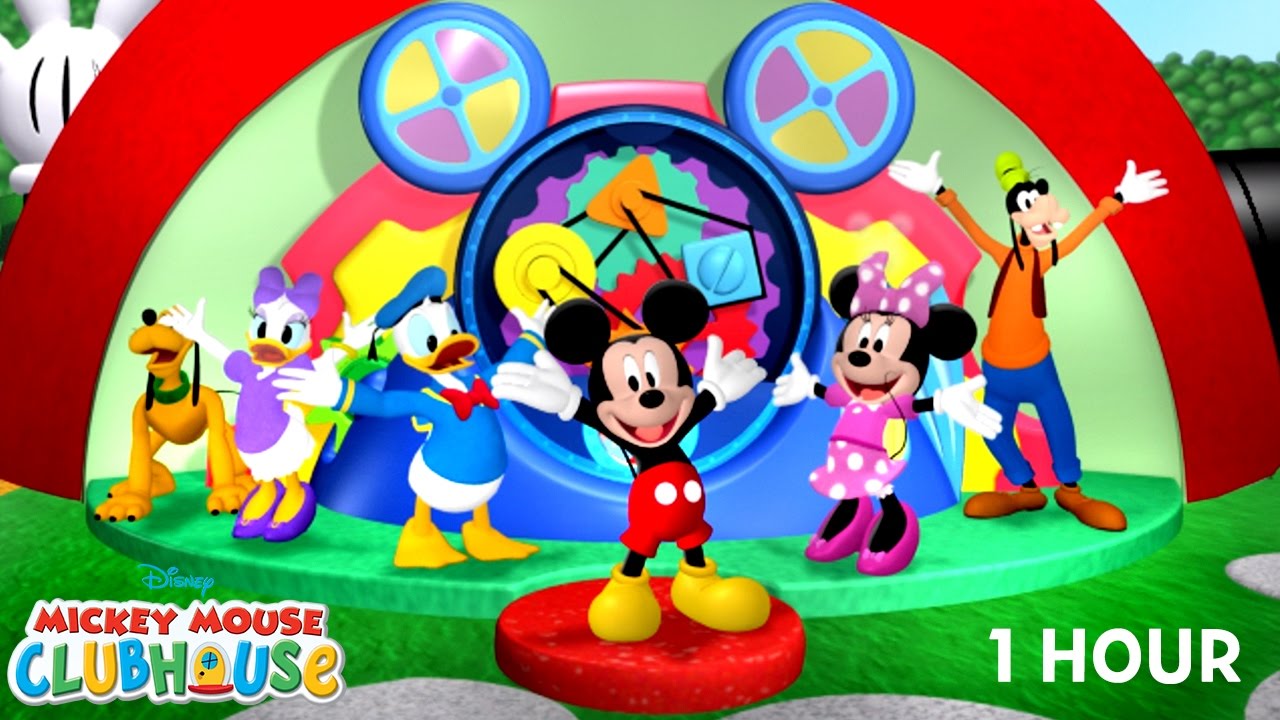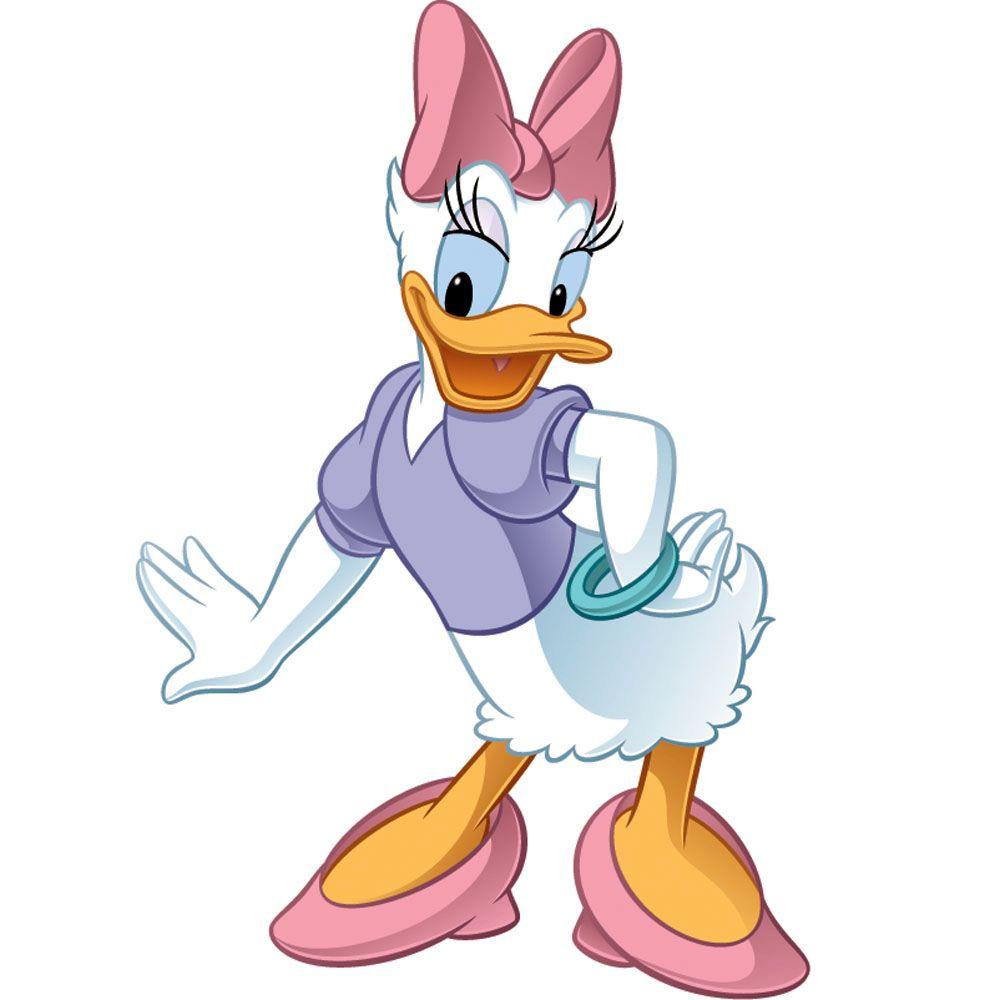MICKEY MOUSE CLUB HOUSE
Team
Mickey Mouse
Mickey Mouse is a funny animal cartoon character and the mascot of The Walt Disney Company. He was created by Walt Disney and Ub Iwerks at the Walt Disney Studios in 1928. An anthropomorphic mouse who typically wears red shorts, large yellow shoes, and white gloves, Mickey is one of the world's most recognizable characters. Created as a replacement for a prior Disney character, Oswald the Lucky Rabbit, Mickey first appeared in the short Plane Crazy, debuting publicly in the short film Steamboat Willie (1928), one of the first sound cartoons. He went on to appear in over 130 films, including The Band Concert (1935), Brave Little Tailor (1938), and Fantasia (1940). Mickey appeared primarily in short films, but also occasionally in feature-length films. Ten of Mickey's cartoons were nominated for the Academy Award for Best Animated Short Film, one of which, Lend a Paw, won the award in 1942. In 1978, Mickey became the first cartoon character to have a star on the Hollywood Walk of Fame. Beginning in 1930, Mickey has also been featured extensively as a comic strip character. His self-titled newspaper strip, drawn primarily by Floyd Gottfredson, ran for 45 years. Mickey has also appeared in comic books such as Disney Italy's Topolino, MM - Mickey Mouse Mystery Magazine, and Wizards of Mickey, and in television series such as The Mickey Mouse Club (1955–1996) and others. He also appears in other media such as video games as well as merchandising and is a meetable character at the Disney parks. Mickey generally appears alongside his girlfriend Minnie Mouse, his pet dog Pluto, his friends Donald Duck and Goofy, and his nemesis Pete, among others (see Mickey Mouse universe). Though originally characterized as a cheeky lovable rogue, Mickey was rebranded over time as a nice guy, usually seen as an honest and bodacious hero. In 2009, Disney began to rebrand the character again by putting less emphasis on his friendly, well-meaning persona and reintroducing the more menacing and stubborn sides of his personality, beginning with the video game Epic Mickey.[3]
Minnie Mouse
Minnie Mouse is a funny animal cartoon character created by Ub Iwerks and Walt Disney. She and Mickey Mouse were first drawn by Ub Iwerks in 1928. The comic strip story "The Gleam" (published January 19–May 2, 1942) by Merrill De Maris and Floyd Gottfredson first gave her full name as Minerva Mouse, although this is seldom used. The comic strip story "Mr. Slicker and the Egg Robbers" (published September 22–December 26, 1930) introduced her father Marcus Mouse and her unnamed mother, both farmers. The same story featured photographs of Minnie's uncle Milton Mouse with his family and her grandparents Marshal Mouse and Matilda Mouse. Her best-known relatives, however, remain her uncle Mortimer Mouse and her twin nieces, Millie and Melody Mouse, though most often a single niece, Melody, appears. In many appearances, Minnie is presented as the girlfriend of Mickey Mouse, a close friend of Daisy Duck,[3] and a friend to Clarabelle Cow. On January 22, 2018, she joined the ranks of other animated celebrities (including Mickey Mouse) by receiving her own star on the Hollywood Walk of Fame.[4]
Goofy
Goofy is a funny-animal cartoon character created in 1932 at Walt Disney Productions. Goofy is a tall, anthropomorphic dog with a Southern drawl, and typically wears a turtle neck and vest, with pants, shoes, white gloves, and a tall hat originally designed as a rumpled fedora. Goofy is a close friend of Mickey Mouse and Donald Duck and is one of Disney's most recognizable characters. He is normally characterized as extremely clumsy and dimwitted, yet this interpretation is not always definitive; occasionally Goofy is shown as intuitive, and clever, albeit in his own unique, eccentric way. Goofy debuted in animated cartoons, starting in 1932 with Mickey's Revue as Dippy Dawg, who is older than Goofy would come to be. Later the same year, he was re-imagined as a younger character, now called Goofy, in the short The Whoopee Party. During the 1930s, he was used extensively as part of a comedy trio with Mickey and Donald. Starting in 1939, Goofy was given his own series of shorts that were popular in the 1940s and early 1950s. Two Goofy shorts were nominated for an Oscar: How to Play Football (1944) and Aquamania (1961). He also co-starred in a short series with Donald, including Polar Trappers (1938), where they first appeared without Mickey Mouse. Three more Goofy shorts were produced in the 1960s after which Goofy was only seen in television and comics. He returned to theatrical animation in 1983 with Mickey's Christmas Carol. His last theatrical appearance was How to Hook Up Your Home Theater in 2007. Goofy has also been featured in television, most extensively in Goof Troop (1992–1993), as well as House of Mouse (2001–2003) and Mickey Mouse Clubhouse (2006–2016). Originally known as Dippy Dawg, the character is more commonly known simply as "Goofy," a name used in his short film series. In his 1950s cartoons, he usually played a character called George Geef or G.G. Geef. Sources from the Goof Troop continuity give the character's full name as G. G. "Goofy" Goof,[3][4] likely in reference to the 1950s name. In many other sources, both animated and comics, the surname Goof continues to be used. In other 2000s-era comics, the character's full name has occasionally been given as Goofus D. Dawg.
Pluto
Pluto, also called Pluto the Pup,[1] is a cartoon dog created in 1930 at Walt Disney Productions. He is a yellow-orange color, medium-sized, short-haired dog with black ears. Unlike most Disney characters, Pluto is not anthropomorphic beyond some characteristics such as facial expression.[Note 1][2] He is Mickey Mouse's pet. Officially a mixed-breed dog,[3] he made his debut as a bloodhound in the Mickey Mouse cartoon The Chain Gang.[4] Together with Mickey Mouse, Minnie Mouse, Donald Duck, Daisy Duck, and Goofy, Pluto is one of the "Sensational Six"—the biggest stars in the Disney universe.[5] Though all six are non-human animals, Pluto alone is not dressed as a human.[6] Pluto debuted in animated cartoons and appeared in 24 Mickey Mouse films before receiving his own series in 1937. All together Pluto appeared in 89 short films between 1930 and 1953. Several of these were nominated for an Academy Award, including The Pointer (1939), Squatter's Rights (1946), Pluto's Blue Note (1947), and Mickey and the Seal (1948). One of his films, Lend a Paw (1941), won the award in 1942.[7][Note 2] Because Pluto does not speak, his films generally rely on physical humor. This made Pluto a pioneering figure in character animation, by expressing personality through animation rather than dialogue.[8] Like all of Pluto's co-stars, the dog has appeared extensively in comics over the years, first making an appearance in 1931.[9] He returned to theatrical animation in 1990 with The Prince and the Pauper and has also appeared in several direct-to-video films. Pluto also appears in the television series Mickey Mouse Works (1999–2000), House of Mouse (2001–2003), Mickey Mouse Clubhouse (2006–2016), and the new Mickey Mouse shorts (2013–present). In 1998, Disney's copyright on Pluto, set to expire in several years, was extended by the passage of the Sonny Bono Copyright Term Extension Act. Disney, along with other studios, lobbied for passage of the act to preserve their copyrights on characters such as Pluto for 20 additional years.[10]
Daisy Duck
Daisy Duck is a cartoon character created in 1940 by Walt Disney Studios as the girlfriend of Donald Duck. Daisy is an anthropomorphic white duck, but has large eyelashes and ruffled tail feathers to suggest a skirt. She is often seen wearing a hair bow, blouse, and heeled shoes. Daisy usually shows a strong affinity towards Donald, although she is often characterized as being more sophisticated than him. Daisy was introduced in the short film Mr. Duck Steps Out (1940) and was incorporated into Donald's comic stories several months later. She appeared in 11 short films between 1940 and 1954, and far later in Mickey's Christmas Carol (1983) and Fantasia 2000 (1999). In these roles, Daisy was always a supporting character, with the exception of Donald's Dilemma (1947). Daisy has received considerably more screen time in television, making regular appearances in Quack Pack (1996), Mickey Mouse Works (1999-2000), Disney's House of Mouse (2001–2003), and Mickey Mouse Clubhouse (2006–2016). Daisy has also appeared in several direct-to-video films such as Mickey's Once Upon a Christmas (1999) and The Three Musketeers (2004). Daisy is the aunt of April, May, and June, three young girl ducks who bear resemblance to Huey, Dewey, and Louie. Daisy is a close friend of Clarabelle Cow and Clara Cluck in the comics and Minnie Mouse's best friend.[3]
Pete
Pete (also called Peg-Leg Pete, Pistol Pete and Black Pete, among other names) is an anthropomorphic cartoon character created in 1925 by Walt Disney and Ub Iwerks. He is a character of The Walt Disney Company and often appears as a nemesis and the main antagonist in Mickey Mouse universe stories. He was originally an anthropomorphic bear but with the advent of Mickey Mouse in 1928, he was defined as a cat.[1][3][5] Pete is the oldest continuing Disney character, having debuted three years before Mickey Mouse in the cartoon Alice Solves the Puzzle (1925). Pete appeared in 67 animated short films between 1925 and 1954, having been featured in the Alice Comedies and Oswald the Lucky Rabbit cartoons, and later in the Mickey Mouse, Donald Duck, and Goofy cartoons. Pete's final appearance during this era was The Lone Chipmunks (1954), which was the final installment of a three-part Chip an' Dale series. He also appeared in the short films Mickey's Christmas Carol (1983), The Prince and the Pauper (1990), Mickey, Donald, Goofy: The Three Musketeers (2004), and Get a Horse! (2013). Pete has also made many appearances in Disney comics, and often appeared as Sylvester Shyster's dimwitted sidekick in the Mickey Mouse comic strip. In the Italian comic production he has come to be the central character in comics from time to time. Pete later made several appearances in television, most extensively in Goof Troop (1992–1993) where he was given more continuity, having a family and a regular job as a used car salesman and is a friend (albeit a poor one) to Goofy. He reprises this incarnation in 1999's Mickey's Once Upon a Christmas. Pete also appears in House of Mouse (2001–03) as the greedy property owner who's always trying devious ways and loop holes to get the club shut down.
Donald Duck
Donald Duck is a cartoon character created in 1934 at Walt Disney Productions. Donald is an anthropomorphic white duck with a yellow-orange bill, legs, and feet. He typically wears a sailor shirt and cap with a bow tie. Donald is most famous for his semi-intelligible speech and his mischievous and temperamental personality. Along with his friend Mickey Mouse, Donald is one of the most popular Disney characters and was included in TV Guide's list of the 50 greatest cartoon characters of all time in 2002.[1] He has appeared in more films than any other Disney character,[2] and is the most published comic book character in the world outside of the superhero genre.[3] Donald Duck rose to fame with his comedic roles in animated cartoons. Donald's first appearance was in 1934 in The Wise Little Hen, but it was his second appearance in Orphan's Benefit which introduced him as a temperamental comic foil to Mickey Mouse. Throughout the next two decades, Donald appeared in over 150 theatrical films, several of which were recognized at the Academy Awards. In the 1930s, he typically appeared as part of a comic trio with Mickey and Goofy and was given his own film series in 1937 starting with Don Donald. These films introduced Donald's love interest Daisy Duck and often included his three nephews Huey, Dewey, and Louie. After the 1956 film Chips Ahoy, Donald appeared primarily in educational films before eventually returning to theatrical animation in Mickey's Christmas Carol (1983). His most recent appearance in a theatrical film was 1999's Fantasia 2000. Donald has also appeared in direct-to-video features such as Mickey, Donald, Goofy: The Three Musketeers (2004), television series such as Mickey Mouse Clubhouse (2006–2016), and video games such as QuackShot (1991).[4]
Clarabelle Cow
Clarabelle Cow is a Disney fictional character within the Mickey Mouse universe of characters. Clarabelle Cow was created by Walt Disney and Ub Iwerks in 1928. Clarabelle is one of Minnie Mouse's best friends and is usually depicted as the girlfriend of Horace Horsecollar, although she has also been paired with Goofy occasionally (especially in the Super Goof comic book series). Clarabelle has remained a supporting character in the United States; only in Italy has she been treated as a major character.
Toodles
Fictional Character
Ludwig Von Drake
Professor Ludwig Von Drake is one of Walt Disney's cartoon and comic book characters. He was first introduced on September 24, 1961, as the presenter (and singer of "The Spectrum Song") in the cartoon An Adventure in Color, part of the first episode of Walt Disney's Wonderful World of Color on NBC.[3] Said to be an uncle of Donald Duck, he is described as a scientist, lecturer, psychologist, and world traveler. The character displayed his "expert" knowledge on a variety of subjects in eighteen episodes of the classic anthology series,[4] as well as on a number of Disneyland Records.[5] Paul Frees was the original voice of Ludwig Von Drake. After Frees retired from the role, the character was briefly voiced by Walker Edmiston.[1] Since 1987, he has been voiced by Corey Burton.[2]
Captain Good-Beard
Fictional Character
Willie the Giant
Fictional Character
About

Mickey Mouse himself appeared in every show, not only in vintage cartoons originally made for theatrical release, but also in opening, interstitial, and closing segments made especially for the show. In both the vintage cartoons and new animated segments, Mickey was voiced by his creator Walt Disney. (Disney had previously voiced the character theatrically from 1928 to 1947 before being replaced by sound effects artist Jimmy MacDonald.)
